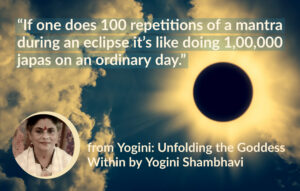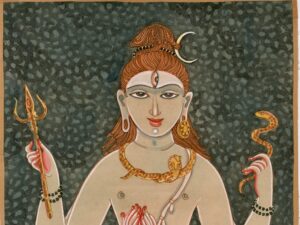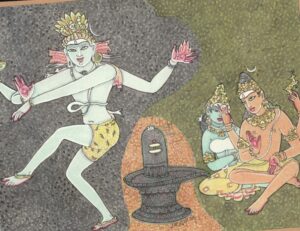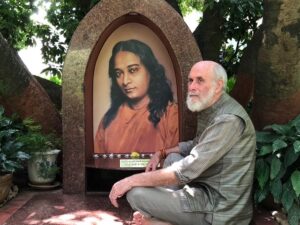Yoga Nidra is a popular topic today but seldom taken to the depth that it is presented with in the Vedantic teachings. Here we will examine it according to the views of the great teacher, Shankara.
Adi Shankara or Shankaracharya is the most lauded exponent of Advaita or non-dualistic Vedanta. Most Advaita taught looks back to his influence, including the teachings of Ramana Maharshi. Yet Shankara wrote on all aspects of Yoga starting with his focus in Jnana or Knowledge, but also Bhakti or Devotion, Raja Yoga and Hatha Yoga in various stotras and shorter works, as well as in his longer commentaries.
Shankara discusses the key factors in Yoga of the nature of Atman, Purusha, Brahman and Ishvara, along with states of Samadhi as Savikalpa and Nirvikalpa in detail. He examines the Yamas and Niyamas for purifying the mind, and all the main aspects of Yoga practice, notably meditation and Self-inquiry, including Kundalini Yoga and Mantra Yoga.
Shankara and Yoga Nidra
Yoga Nidra is an important topic that Shankara takes up in his short work Yogataravali, which discusses Hatha Yoga and Raja Yoga in detail and the transition from Hatha to Raja. For him Raja Yoga and Jnana Yoga are the same.
Shankara defines Yoga Nidra not as relaxation, pratyahara, or some kind of calm sleep or rest state as many people do today, as Yoga Nidra has been made superficial or introductory in many ways, particularly with the physical orientation of Yoga as asana. Shankara relates Yoga Nidra to Nirvikalpa Samadhi, the highest Samadhi beyond all the movements of the mind. This is a Raja Yoga or Jnana Yoga definition, which he directs us towards when examining yogic teachings.
Shankara’s definition of Yoga Nidra as a state beyond body and mind reminds us of his definition of Asana not as a physical posture but as the happiness (sukha) gained in unbroken contemplation of Brahman. We should not take yogic practices in a mere outer or physical sense only, but recognize their cosmic implications as well.
All Yoga practices done with the body have subtle counterparts in the prana and mind and ultimately lead to pure consciousness, Atman/Purusha beyond the mind. This is where Advaita Vedanta prevails. To view them only as physical or mental exercises is to miss their deeper meaning and higher application.
Yogataravali 25.26
Cutting off the root of thought and imagination in the mind.
Uprooting completely the net of karma.
Absorbed in the auspicious state of continuous practice
The state of Yoga Nidra expands in the Yogi.
Attaining serenity on the couch of Turiya (the fourth state), above all the three states (of waking, dream and deep sleep).
Of the nature of consciousness (Samvid), all the time,
O friend, enter the state of sleep that is Nirvikalpa Samadhi.
Sanskrit
vicchinna samkalpa vikalpa mūle
niḥśeṣa nirmūlita karmajāle
nirantarābhyāsa nitāntabhadrā
sā jṛimbhate yogini yoganidrā
viśrantim āsādya turīya talpe
viśvādyavasthā tritiyoparisthe
samvinmayīm kām api sarvakālam
nidrām sakhe nirviśa nirvikalpām
Here Yoga Nidra is described as going beyond all thoughts of the mind (samkalpa, vikalpa), and entering into Turiya, the fourth state of Self-awareness beyond the mind and its three states of waking, dream and deep sleep. This is the highest Nirvikalpa Samadhi in which we go beyond all birth, death and karma, the highest goal of Yoga texts like the Yoga Sutras. It reflects the teachings of the famous Mandukya Upanishad that teaches the nature of Om relative to these four states as the Self of all.
Of course, Shankara’s teachings are beyond the reach of all but a very few advanced meditators. But they do show us that we cannot just physicalize yogic teachings and truly understand or apply them to their full benefit. Yoga is about deconstruction physical and outer reality, leading to transcending speech and mind into the Infinite and Eternal Brahman. Such yogic practices applied at a physical level certainly can aid in health and overall wellbeing, which is very important, but that is only their initial phase. We must always strive to take them to deeper levels of our being, particularly beyond the mind.
You can begin with Yoga Nidra as relaxation of the body, prana and mind and experience the health benefits of rest and sleep that arise from these, or as a basis for meditation. But do not stop there. Go into a deeper introspection, inquire into the Self or pure I beyond body and mind, such as Shankara and Ramana Maharshi teach.
True Yoga Nidra as putting the mind to rest culminates us to the state of Nirvikalpa Samadhi, the natural state of the Seer or Purusha, the Self of all, which no movement of thought can enter or reach. Nirvikalpa Samadhi is not a state of mind or higher awareness but the nature of Pure Consciousness beyond the mind.
Vamadeva







